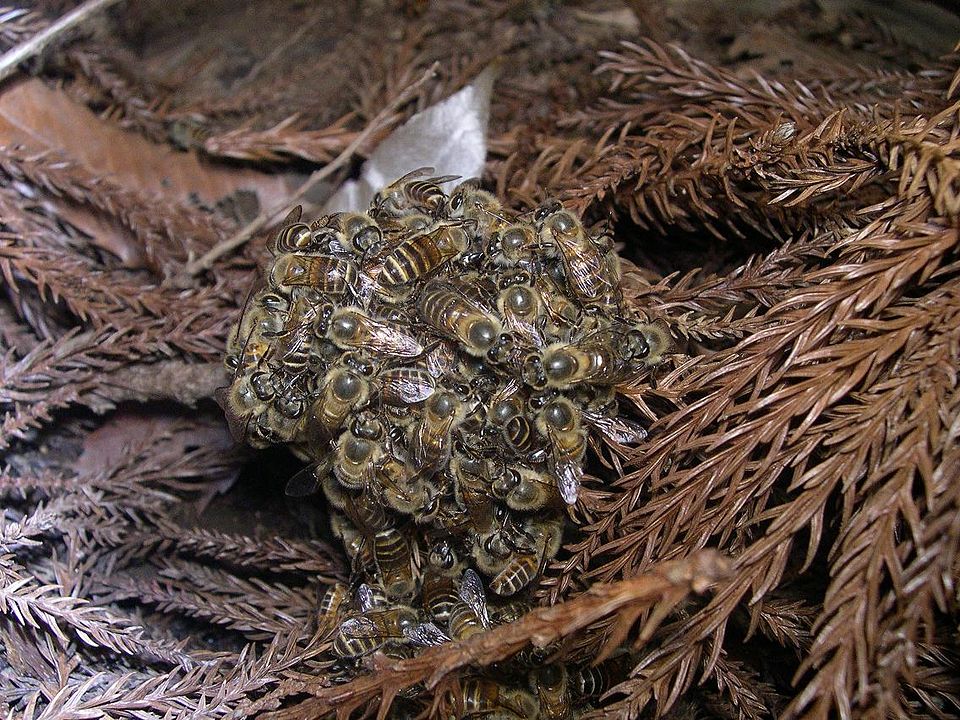Bee Fact of the Day
Murder hornets are in the news. Japanese honey bees have an amazing defense:
Wikipedia: Beekeepers in Japan attempted to introduce western honey bees (Apis mellifera) for the sake of their high productivity. Western honey bees have no innate defense against the hornets, which can rapidly destroy their colonies.[3] Although a handful of Asian giant hornets can easily defeat the uncoordinated defenses of a western honey bee colony, the Japanese honey bee (Apis cerana japonica) has an effective strategy. When a hornet scout locates and approaches a Japanese honey bee hive, she emits specific pheromonal hunting signals. When the Japanese honey bees detect these pheromones, 100 or so gather near the entrance of the nest and set up a trap, keeping the entrance open. This permits the hornet to enter the hive. As the hornet enters, a mob of hundreds of bees surrounds it in a ball, completely covering it and preventing it from reacting effectively. The bees violently vibrate their flight muscles in much the same way as they do to heat the hive in cold conditions. This raises the temperature in the ball to the critical temperature of 46 °C (115 °F). In addition, the exertions of the honey bees raise the level of carbon dioxide (CO2) in the ball. At that concentration of CO2, they can tolerate up to 50 °C (122 °F), but the hornet cannot survive the combination of high temperature and high carbon dioxide level.[45][46] Some honey bees do die along with the intruder, much as happens when they attack other intruders with their stings, but by killing the hornet scout, they prevent it from summoning reinforcements that would wipe out the entire colony.[47]
Detailed research suggests this account of the behavior of the honey bees and a few species of hornets is incomplete and that the honey bees and the predators are developing strategies to avoid expensive and mutually unprofitable conflict. Instead, when honey bees detect scouting hornets, they transmit an “I see you” signal that commonly warns off the predator.[48]

By Takahashi – Own work, CC BY-SA 3.0, https://commons.wikimedia.org/w/index.php?curid=348351